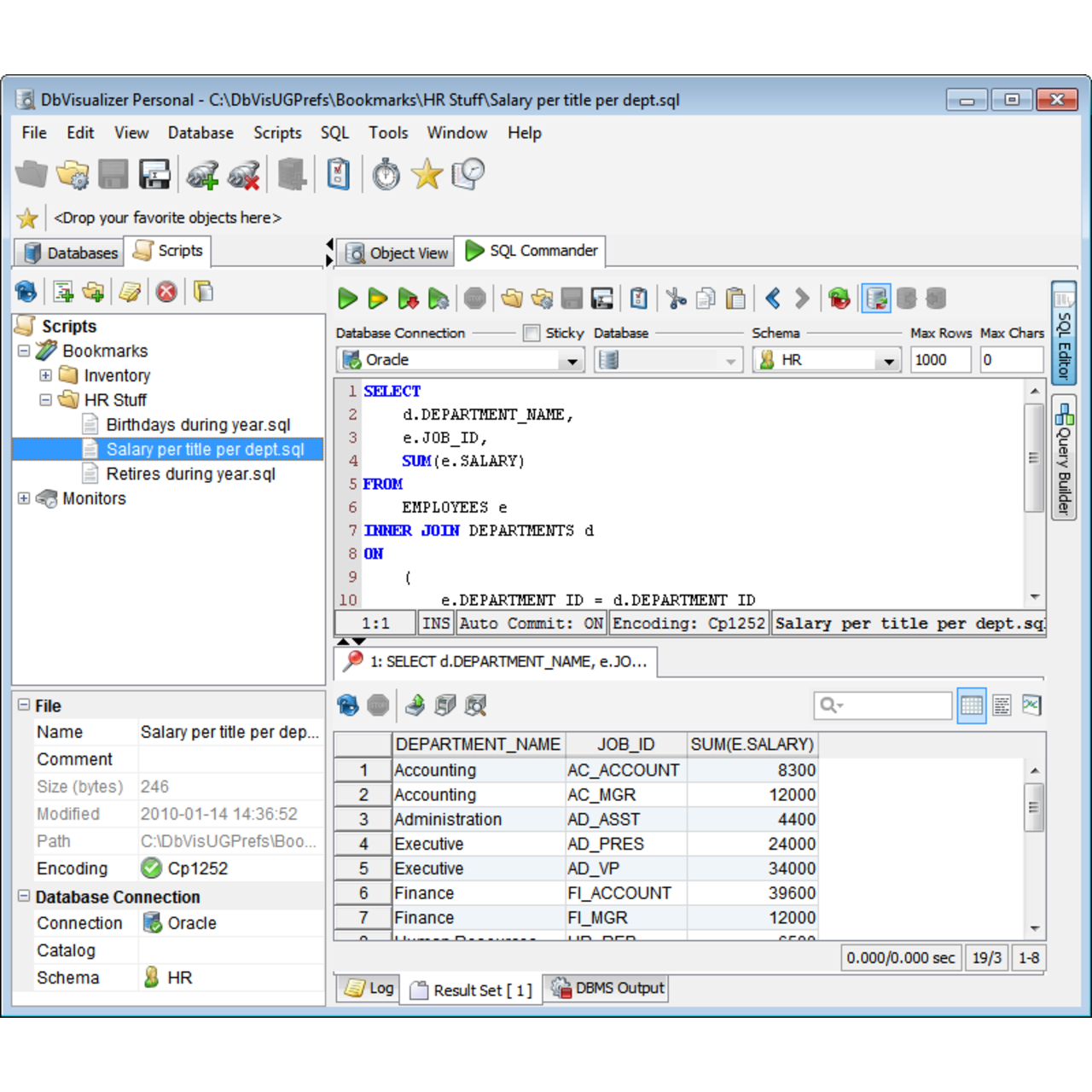
- Dbvisualizer move results to the side pdf#
- Dbvisualizer move results to the side driver#
- Dbvisualizer move results to the side password#
See the "Data Model" chapter for table-specific information. See the "Supported SQL" chapter in the help documentation for more information on the supported SQL. Select the Database Connection, Database, and Schema from the available menus. To execute SQL queries, use the SQL Commander tool: Click SQL Commander -> New SQL Commander. If you have installed the shortcut to SQL Developer icon on your desktop, click the icon to start your SQL Developer and move to Step 4. To browse through tables exposed by the DB2 JDBC Driver, right-click a table and click Open in New Tab. Note: If you have already created a source and destination database connection, then you may move to Using the Database Copy Feature topic.
Dbvisualizer move results to the side password#
Dbvisualizer move results to the side driver#
Driver: Select the driver you just created.ĭatabase URL: Enter the full JDBC URL.If you selected the "No Wizard" option, select the Generic or Auto Detect option in the Database Type menu. Database Type: If you selected the wizard option, the database type is automatically detected.the index and pk info using dbvisualizer, then save the results and send them to us. In the Connection section, set the following options: It should be possible to export any unique index not just the PK. In the Database tab, right-click the Database Connection node and click Create a Database Connection.In the Driver Class menu, select the DB2Driver class, 2Driver.ĭefine the Connection to the JDBC Data Sourceįollow the steps below to save connection properties in the JDBC URL.Wscript.Echo the User Specified tab, click the Open File button and select the file, located in the lib subfolder of the installation directory. Set objLatestEvent = colMonitoredEvents.NextEvent

& “Targetinstance ISA ‘CIM_Director圜ontainsFile’ and ” _ (“SELECT * FROM _InstanceDeletionEvent WITHIN 10 WHERE ” _ Set colMonitoredEvents = objWMIService.ExecNotificationQuery _ If the results dont look quite right, youThe DbVisualizer Query Builder.

Dbvisualizer move results to the side pdf#
Set objWMIService = GetObject(“winmgmts:” _ View query results in the browser or export them to CSV or PDF format and use. Any time a file is added to this folder, the script responds by echoing the name of that new file: strComputer = “.” In the meantime, here’s a script that monitors the C:\Scripts folder. Consequently, it might be worth your while to check out this Tales from the Script column. We don’t have time to discuss WMI events in any detail in this column, but they can be incredibly useful to script writers. Yes, this is possible, thanks to the magic of WMI events, which allow you to write a script to monitor for something of interest (like a file being added to a folder) and then take some action any time an event like that occurs. Front-side to back-side connections are reduced by up to a 1000:1 ratio. With replication lag detection, we can guarantee data consistency. Our proxy routes queries to the appropriate database instance. To implement a master writer and read replica architecture, application changes are required. Hey, Scripting Guy! Is it possible to have a script automatically run any time a file is added to a specific folder? Our distributed deployment results in optimal performance and predictive scale. The Insert Key toggles the overtype (OVR) facility, which can also be turned on or off by clicking on the OVR button on the Status Bar.


 0 kommentar(er)
0 kommentar(er)
